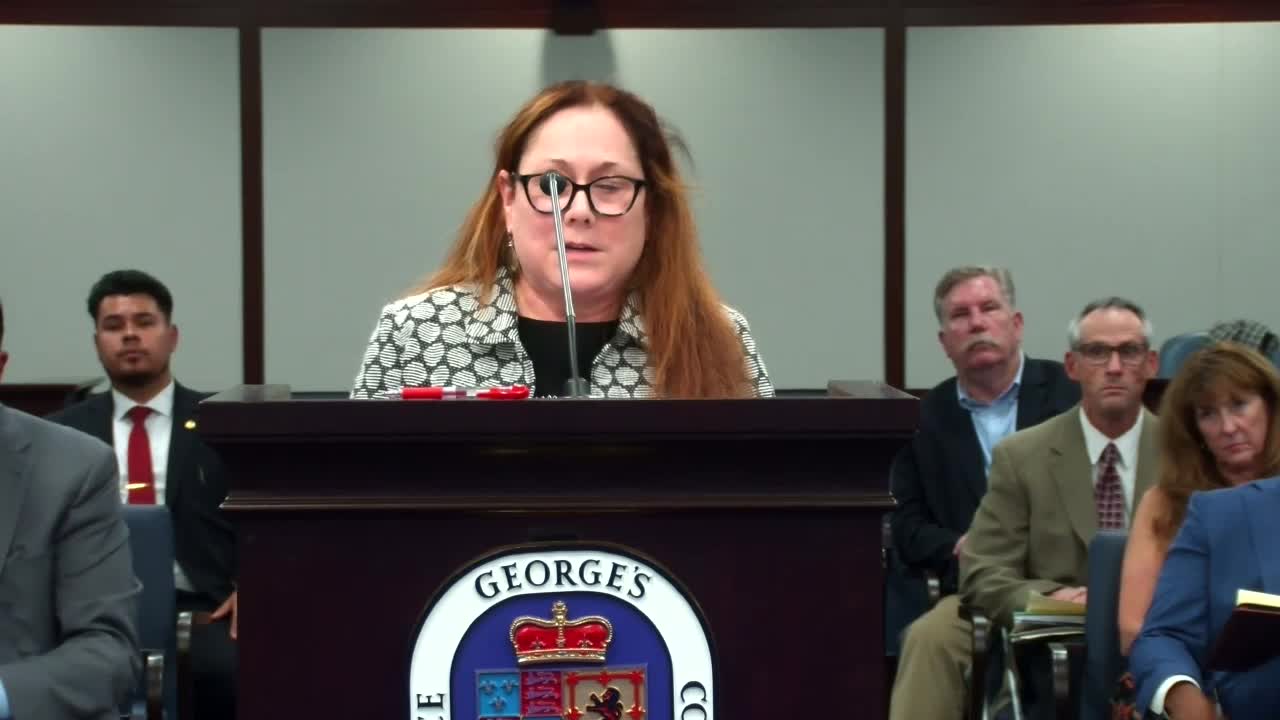Zoning Hearing Examines Variance Authority for Planned Retirement Community
October 06, 2025 | Prince George's County, Maryland
This article was created by AI summarizing key points discussed. AI makes mistakes, so for full details and context, please refer to the video of the full meeting. Please report any errors so we can fix them. Report an error »

During a recent District Council meeting in Prince George's County, Maryland, significant discussions centered around the authority of the council to grant area variances in relation to zoning ordinances. The applicant's request for an area variance raised questions about the limitations imposed by existing regulations, particularly regarding special exceptions.
The zoning ordinance specifies that the District Council's ability to grant variances is restricted to those related to structures or uses, as defined within the ordinance. A structure is described as anything constructed or built, while use refers to the activities or operations conducted on a property. The hearing examiner had recommended a broader interpretation that would allow for area variances, arguing that failing to do so could hinder the development of a planned retirement community.
However, council members expressed concerns that this interpretation was overly expansive and inconsistent with Maryland's statutory construction rules. These rules emphasize the importance of adhering to the plain language of the statute, which clearly delineates the council's authority. The council underscored that variances should only apply to specific structures or uses, and not to area variances, which could lead to ambiguity in the application of zoning laws.
This discussion highlights the ongoing challenges faced by local governments in balancing development needs with regulatory frameworks. As the council navigates these complexities, the implications for future development projects, particularly those aimed at addressing community needs like retirement housing, remain a critical focus. The council's decision on this matter will likely set a precedent for how similar requests are handled in the future, shaping the landscape of zoning and development in Prince George's County.
The zoning ordinance specifies that the District Council's ability to grant variances is restricted to those related to structures or uses, as defined within the ordinance. A structure is described as anything constructed or built, while use refers to the activities or operations conducted on a property. The hearing examiner had recommended a broader interpretation that would allow for area variances, arguing that failing to do so could hinder the development of a planned retirement community.
However, council members expressed concerns that this interpretation was overly expansive and inconsistent with Maryland's statutory construction rules. These rules emphasize the importance of adhering to the plain language of the statute, which clearly delineates the council's authority. The council underscored that variances should only apply to specific structures or uses, and not to area variances, which could lead to ambiguity in the application of zoning laws.
This discussion highlights the ongoing challenges faced by local governments in balancing development needs with regulatory frameworks. As the council navigates these complexities, the implications for future development projects, particularly those aimed at addressing community needs like retirement housing, remain a critical focus. The council's decision on this matter will likely set a precedent for how similar requests are handled in the future, shaping the landscape of zoning and development in Prince George's County.
View full meeting
This article is based on a recent meeting—watch the full video and explore the complete transcript for deeper insights into the discussion.
View full meeting
